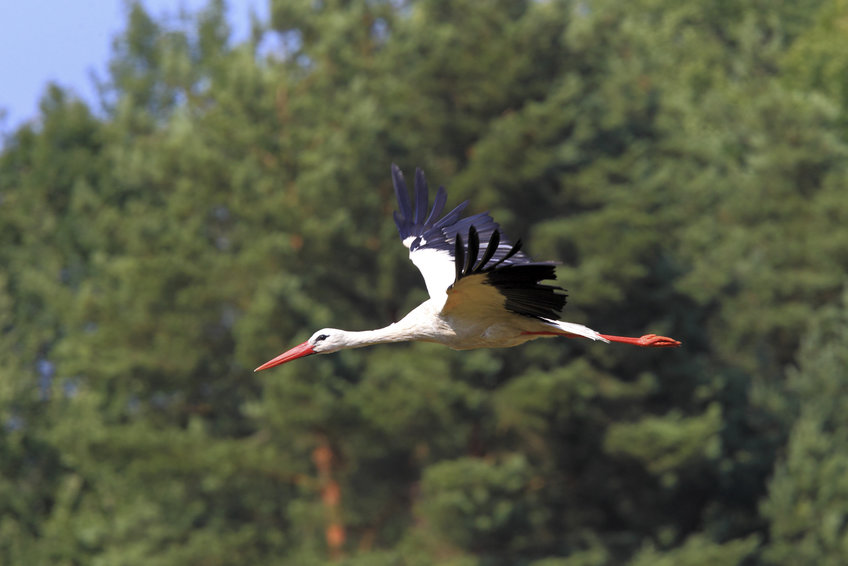Animals may be the best monitors of global climate change
Carrying small sensors, they could be the most sensitive and informative weather instruments of all
The world’s scientists rely on an elaborate network of satellites, ocean buoys, weather stations, and balloons to help predict the weather and assess the impact of global climate change across land, air, and sea. But they are overlooking some of the most sensitive and informative instruments of all – the world’s animals – argue researchers at Yale’s Center for Biodiversity and Global Change and the Max Planck Institute of Animal Behavior. Equipping fish, birds, seals, and terrestrial animals with sophisticated sensors can give researchers localized and timely data on environmental conditions impacted by climate change that current technology cannot, they say.

“We can literally turn animals into flying, swimming, and walking weather stations,’’ said Diego Ellis Soto, a graduate student at Yale and first author on the paper. “Animals equipped with modern sensors could be seen as the twenty-first century canary in the coal mines.”
In the paper, the scientists describe the shortcomings of current methods of collecting weather and climate data. They then outline the benefits of equipping animals with sensors that can measure air temperature, ocean salinity, and air pollution as well as an animal’s metabolism. For instance, satellites can gauge temperatures at the surface of a cloud-covered jungle canopy, but not conditions on the ground. However, a monkey with modern GPS tracking sensors can; and its stress levels caused by warming temperatures can also be monitored.
Goats as weather stations in mountaineous regions
Most weather stations are built upon flat land and in developed areas of the world, but they are seldom placed in the mountainous regions that are most affected by climate change. However, sensors on mountain goats moving up and down slopes are able to characterize the temperature profile at great detail. Over the Atlantic Ocean, expensive weather balloons give pilots warnings of turbulence on their routes, but over the Pacific Ocean “flying from Japan to Chile there is little to no such information available,” Ellis Soto said.
That’s why the government of Japan has begun to equip high-flying birds with sensors to gauge windspeed strength at a variety of altitudes as well as integrating ocean measurements from turtles into oceanographic models for weather forecasts. “Animals can be our fine-tuned biological weather stations,” said Martin Wikelski, a director at the Max Planck Institute of Animal Behavior and co-author of the perspective piece.
Thousands of animals with sensors
Thanks to initiatives of the Max Planck Institute of Animal Behavior, thousands of birds and animals are already equipped with sensors that are designed to track where and why wildlife is thriving, and where they are struggling along their migratory routes impacted by climate change. These animal-borne sensors can not only be used to help predict the impact that extreme weather events will have on animals; they can also give a living measure of the impacts of climate change itself in near real time.
For instance, tagged elephant seals already provide 80 percent of available information on ice depth and ocean salinity in Antarctica, which helps predict sea level rise under current and future climate change, Ellis Soto said. Satellites can give a rough approximation of conditions in sub-Saharan Africa at a resolution of one square kilometer, but “a white stork with sensors gives us a bird’s eye view of conditions on the ground in seconds,” he added.
Finding sea grass by following sharks
Ocean sea grass is one of nature’s crucial ways to capture carbon emissions that fuel climate change. Scientists have been able to find many concentrations of oceanic sea grass by following movements of sensor-carrying tiger sharks, which are known to be attracted to mangroves and sea grass. Thus, by combining knowledge of animals’ ecologies with technological advances, researchers are can remotely monitor hard-to-access regions across the world.
And benefits are not limited to purely wild areas of the world. In a world afflicted by extreme heat during summer, tagged carrier pigeons could help identify dangerous urban heat islands and air pollution levels in heavily populated areas. “We are advocating for an existing byproduct of many modern GPS tracking devices that few meteorologists and biologists are using,” Ellis Soto said. “It is an untapped gold mine of detailed meteorological information with relevance for weather forecasting and biology alike.”












